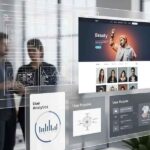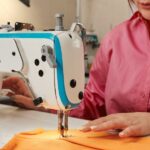In a world where the frustration of time spent in transit often eclipses the value of the destination, Laureti Group, a first-of-its-kind mobility technology company, is on a mission to change the narrative. The company places a laser-like focus on the passenger’s needs, setting the stage for a seamless, productive, and enjoyable journey.
At the heart of Laureti’s innovation lies their cutting-edge technology, MiRA.OS. This software platform offers a mobile business lounge that seamlessly integrates with the passenger’s work life. MiRA.OS provides easy access to work data within the vehicle’s cabin, eliminating connectivity issues frequently plaguing travelers. It’s as if you’ve stepped off a plane and into your office, no matter where you are in the world. This approach maximizes productivity and turns the usually frustrating commute into a productive work environment.
Laureti doesn’t stop at productivity, though. They’ve designed smart seats equipped with sensors that monitor passengers’ comfort, making adjustments as needed during extended journeys. Furthermore, if relaxation is your preference, these seats can be customized to provide access to your preferred streaming services, ensuring that even your longest commute can be spent in utmost comfort. Laureti’s dedication to a passenger-centric approach is a welcome and forward-thinking shift in the transportation industry, making it a company at the forefront of change.
A Chance Encounter Leads to Innovation
One could say that Marcus Paleti’s path to creating Laureti Group began by chance since his background is not in the automotive business but in fashion retail and entrepreneurship. The story begins in 2016 when Marcus was waiting for a friend at a private members club in London. His friend was running late for their appointment, so Marcus decided to explore the club and ended up in a room where a group of engineers reviewed plans for a hybrid electric vehicle and discussed the revival of the Jensen brand.
Curiously, Marcus remarked about the project’s timing, suggesting that it might be too late to enter the market with such a product. As he spoke, the room became silent, creating an awkward moment, as he had inadvertently insulted the people in the room. Among the group of people in the room was the Late Tim Hearley, a former shareholder of Aston Martin of Jensen. Marcus attempted to defuse the situation but ultimately left the scene, feeling embarrassed.
Two weeks later, Marcus crossed paths with Tim again, apologized for his comment, and admitted that he knew nothing about cars and had no experience in the automotive industry. However, Tim was open to hearing Marcus’s perspective. After a few brainstorming sessions, Tim offered Marcus the opportunity to conduct some studies.
Marcus then spent nearly a year conducting research and studies related to the newly emerging electric vehicle industry. He shared his findings with Tim and proposed a business strategy. Eventually, the project to revive the Jensen brand didn’t move forward as Tim’s health declined, but this turn of events marked a steep learning curve for Marcus as he dove into the world of electric vehicles and the automotive industry.
The light bulb moment for Marcus occurred during one of the many business trips Marcus took.
While traveling on a four-hour car ride in India, he noticed that while he was the customer and the person paying for the car and the driver, he had limited control over the car’s digital features. Not having control of basic car features like air conditioning and the choice of music led to the realization that putting the passenger at the center of the automotive experience could be a game-changer.
“Instead of the hardware – making the vehicle itself, I’m actually focusing on the product – what the customer is getting out of it,” says Paleti.
Marcus began to see the automotive industry in a different light, focusing on the passenger’s experience and aiming to streamline and improve travel for passengers. This perspective shift led to a new way of thinking and innovative ideas about how to make the travel experience more customer-centric and user-friendly. Laureti Group was born.
Building the Right Team
To bring this vision to life, Marcus understood that the focus was not just on creating a traditional automotive product but on delivering transformative changes in how people experience travel. He needed to bring together a wide range of skills and perspectives to shape the project’s success.
He sought out industry experts with a deep understanding of car construction and automotive engineering; technology experts, particularly those well-versed in artificial intelligence (AI) who were vital for developing the project’s digital and technological components; and professionals specializing in customer experience, focused on aligning the product with customer preferences and needs.
Marcus recollects about building the right team, “This is not going to be an automotive company. It has various elements beyond just automotive or hardware components so we had to figure out what the ecosystem requires and then put a team together from different disciplines to deliver the expertise needed for the project. Thinking outside the car is the need of the hour to deliver a complete solution for productive, seamless, and accessible mobility. Because for the last 100 years, cars have been about the driver, but the next 100 will be about the passenger.
To learn more about Laureti Group, visit their website www.lauretigroup.com, or connect with Marcus Paleti on LinkedIn.
















